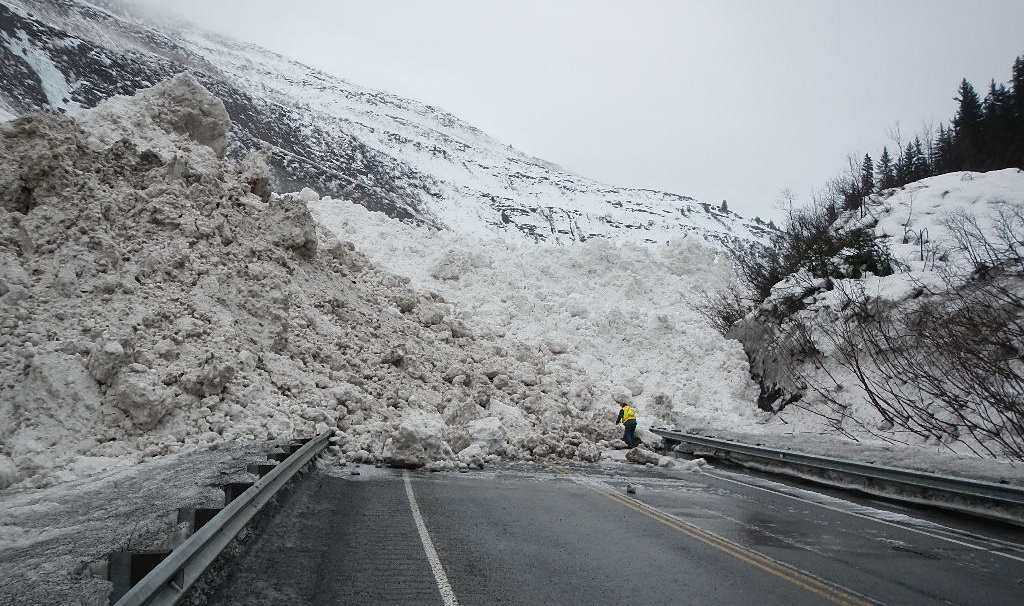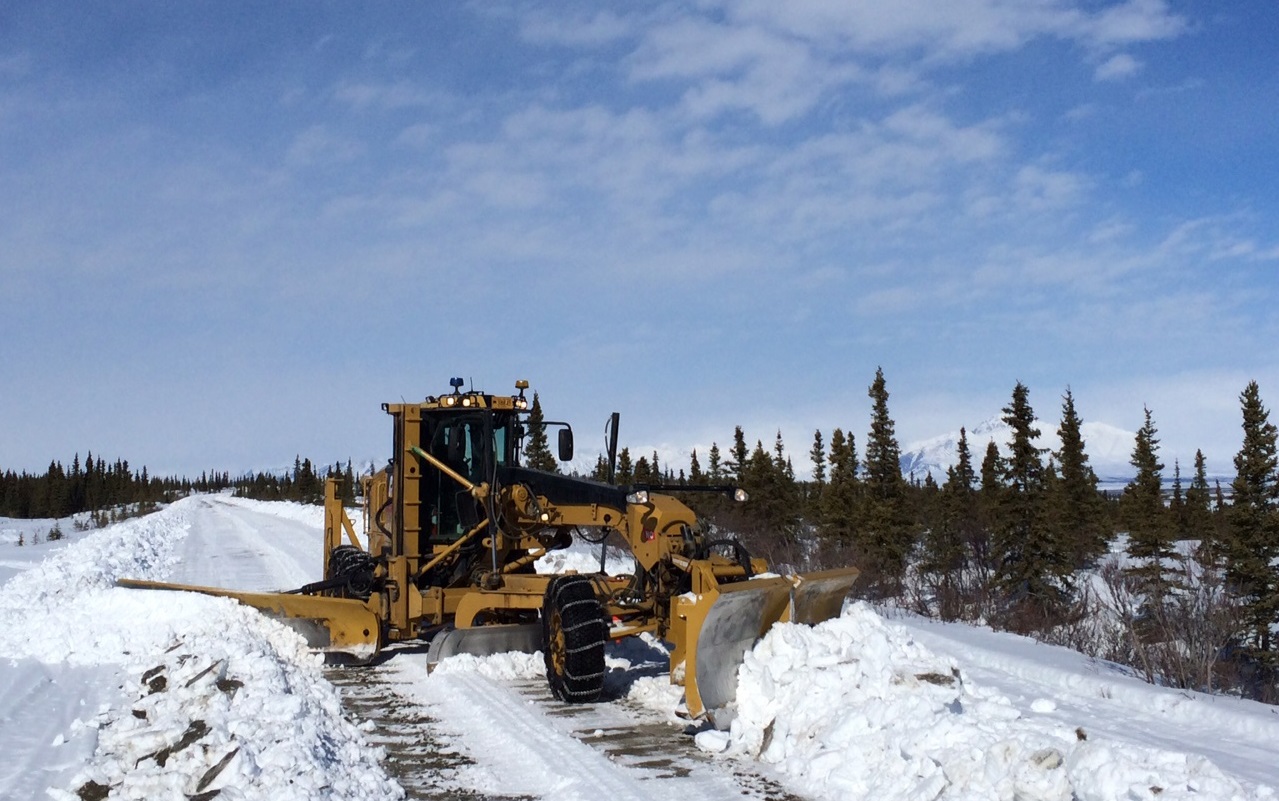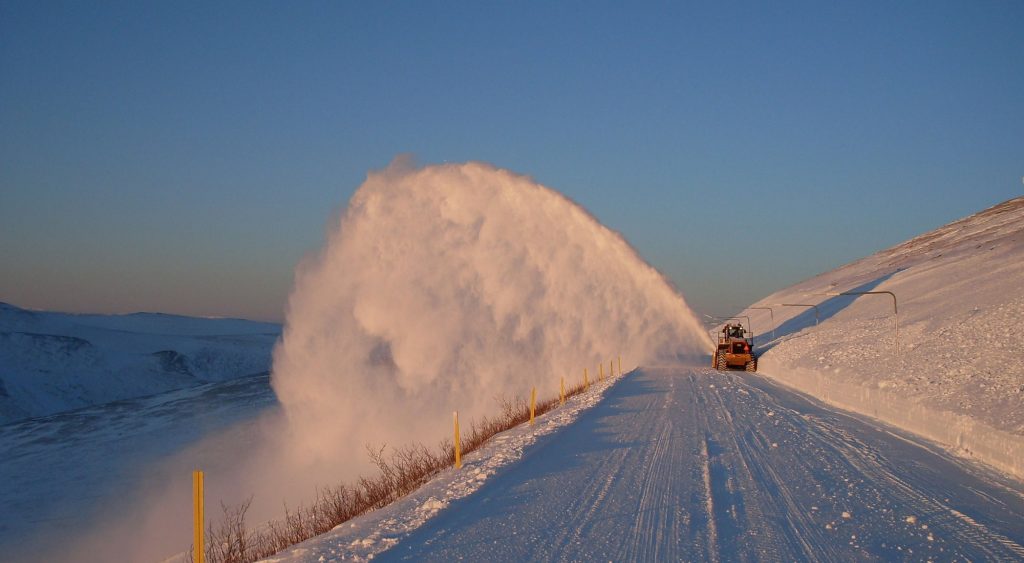Outsmarting winter: How Alaska fights snow and ice to prevent another ‘Icepocalypse’
When it comes to winter, Alaskans scoff at snow and cold as they deal with minus 40 degrees in Fairbanks or 300 annual inches of snow in the city of Valdez. But ice and rain are a different story. In 2010, a three-day ice storm paralyzed the Fairbanks region in central Alaska and encrusted roads with treacherous ice that lasted until spring.
“The ‘Icepocalypse’ walloped and completely blindsided us,” says Dan Schacher, Fairbanks District maintenance superintendent at the Alaska Department of Transportation & Public Facilities. The agency was prepared for snow, but lacked equipment, materials and road-condition data to battle thick, glassy ice.
Climate change has made winter rain, which often freezes on pavement and wreaks havoc for drivers, a growing threat for Alaska. But unlike in 2010, Schacher and his crews are now ready for ice, with brawny ice-breakers, anti-icing chemicals, roadside weather stations and an innovative technology called WeatherCloud.
Owned by Fathym, an Internet of Things company based in Colorado, WeatherCloud is a system of mobile sensors that tracks road temperature, dewpoint, precipitation, pavement conditions, wind speed, visibility and other data. Unlike atmospheric weather data from satellites, WeatherCloud gives users hyperlocal, road-weather data at the ground level, a key piece of information in Alaska’s extreme conditions.
Even for an agency well-versed in plowing snow, outsmarting winter is a tough job when temperatures can plunge to minus 80. Thompson Pass near Valdez got 975 inches of snow one year and the state is bigger than Texas, California and Montana combined. The rugged geography also fosters difficult microclimates; it’s not uncommon for it to be sunny in Fairbanks and snowy in mountains a few miles away.
Keeping 5,600 miles of state roads clear has traditionally meant watching weather and sending crews to check conditions, a slow task for a department whose budget has been slashed in recent years.

“We were expending a lot of unnecessary resources – staff time and money,” Schacher says. “We needed better data to make better decisions.” Affordable WeatherCloud sensors, applied two years ago to Fairbanks-based trucks, have worked so well that Alaska is expanding them to 70 vehicles in more areas this winter.
In the years after Icepocalypse, the state has become more proactive in tackling ice and snow, particularly by treating roads with anti-icing chemicals – salt brine – before a storm rolls in. But the approach requires many complex decisions. Transportation officials must decide if, when and where to use snow plows and chemicals, and which chemicals are ideal for conditions.
Sending plows when they’re not needed costs money. Keeping them parked when they are needed puts drivers at risk. Applying salt brine at the wrong temperature worsens conditions, making WeatherCloud’s road-temperature data crucial for the job.
“I’ll be honest. If we put chemicals down at the wrong time, I can actually make ice instead of get rid of ice,” Schacher says. If the job of making decisions that affect state budget and the safety of thousands of drivers is stressful, he isn’t saying. But he says the buck stops with him in Fairbanks.
“Ultimately, it’s my responsibility. The decision comes down to me,” he says. “But I’m much more confident now as we see events approach. With WeatherCloud, we’ve empowered our staff to be more proactive in fighting winter storms.”
The technology aggregates sensor data on a Microsoft Azure-powered platform, adds meteorological data, applies machine-learning algorithms and produces accurate, real-time, road-weather reports. They feed into Alaska’s weather-forecasting and road-maintenance data system, which helps Schacher and the department decide how to treat roads.
The data was particularly helpful a few months ago when Schacher was scrutinizing a forecast for rain. A national weather forecaster told him the rain wouldn’t hit the ground, but Schacher wasn’t so sure. WeatherCloud and the state data system were showing a high chance of freezing rain on the roads.

“So we brought in extra people and kept equipment out on the road,” he says. “By 10 a.m. the next day, our main roads were passable and people in town could go about their business.”
Transportation departments around the country – Colorado, Utah, Wyoming and Iowa – have also used WeatherCloud and Fathym is exploring other industries for its sensing technology. It recently analyzed the cost of weather-related accidents and delays for a large American trucking company and found it to be $100 million.
Fathym says WeatherCloud can reduce that cost with sensors on thousands of commercial trucks that give drivers data on slick roads, dangerous crosswinds, low visibility and other hazards.
“We want to get them better information that allows them to be proactive,” says Mike Chapman, Fathym’s chief weather officer. “They can take a different route or park for half a shift to be not vulnerable and get to their destination more safely.”
Midsize breweries also use WeatherCloud to track boiler temperature and fermentation rates, and Fathym is exploring how its sensors can help detect air quality and empower smart cities.
The work is all part of a mission to help organizations simplify and accelerate the Internet of Things.
“We’re looking at ways to facilitate all these different data sets coming together and keeping them flexible and flowing, so they’re not locked in silos,” says Christy Szoke, Fathym’s co-founder and chief marketing officer.
“It’s a broad and future view of data, because you don’t always know in advance what you’re going to need that data for.”
Top image: A state transportation worker blows snow off of Eagle Summit in central Alaska. Photo courtesy of Alaska Department of Transportation & Public Facilities.








